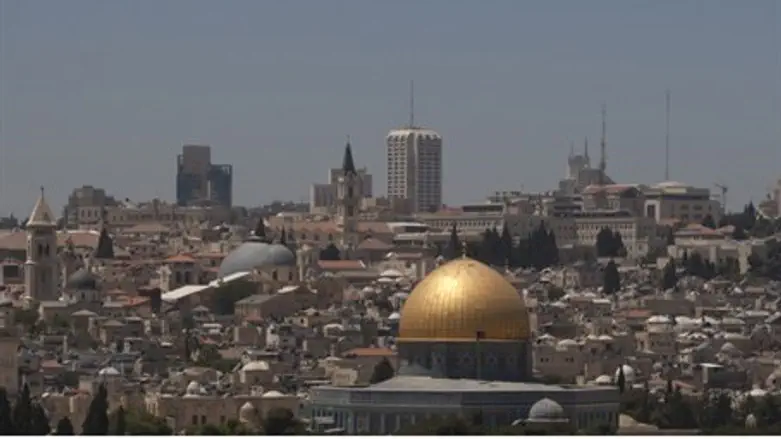
In honor of Yom Yerushalayim (Jerusalem Unification Day) which will be marked on Sunday, the Jerusalem Institute for Israel Studies released on Thursday some statistics from the past two years about the holy city.
The full data will be presented on the Jerusalem Institute for Israel Studies’ website as of Sunday and will be published in the Statistical Abstract of Jerusalem in 2012.
The data show that in 2011 Jerusalem's population was estimated at 801,000, of which 64 percent were Jews and other non-Arabs and 36 percent were Arabs.
There were 497,000 Jews in Jerusalem in 2011, 281,000 Muslims, 14,000 Christians and 9,000 with no stated religious affiliation. In total, since 1967 and until the end of 2011 the city's population grew by 200 percent: the Jewish population increased by 157 percent and the Arab population increased by 327 percent.
The data also show that in 2010, 474,000 people (Jews and Arabs) lived that in areas that were added to Jerusalem in 1967. These 474,000 inhabitants represent 60 percent of the population of Jerusalem.
192,000 Jews and other non-Arabs lived in neighborhoods of areas added to Jerusalem in 1967, accounting for 41 percent of the population in those areas. 280,900 Arabs, which constituted 59 percent of the population, lived in these neighborhoods.
The largest Jewish neighborhoods in Jerusalem, according to the statistics, are Ramot with 41,400 residents, Pisgat Ze’ev with 40,400 residents and Gilo with 29,600 residents.
As for employment in 2011, the statistics show that the employment rate in Jerusalem stood at 46 percent, compared to 57 percent in all of Israel. The relatively low rate in Jerusalem is mainly due to the low participation in the work force among hareidi men and Arab women, as well as the relatively high rate of people aged 15 to 20 in Jerusalem who study in schools and yeshivas or serve in the army, and therefore are not working and are not looking for work.
The rate of participation in the labor force among the Jewish population of Jerusalem was 50 percent and was lower than the rate of participation among the Jewish population in Israel, which stood at 61 percent.
The rate of participation in the labor force among the Arab population in Jerusalem was 37 percent and was lower than the rate of participation among the Arab population in Israel, which stood at 41%.

